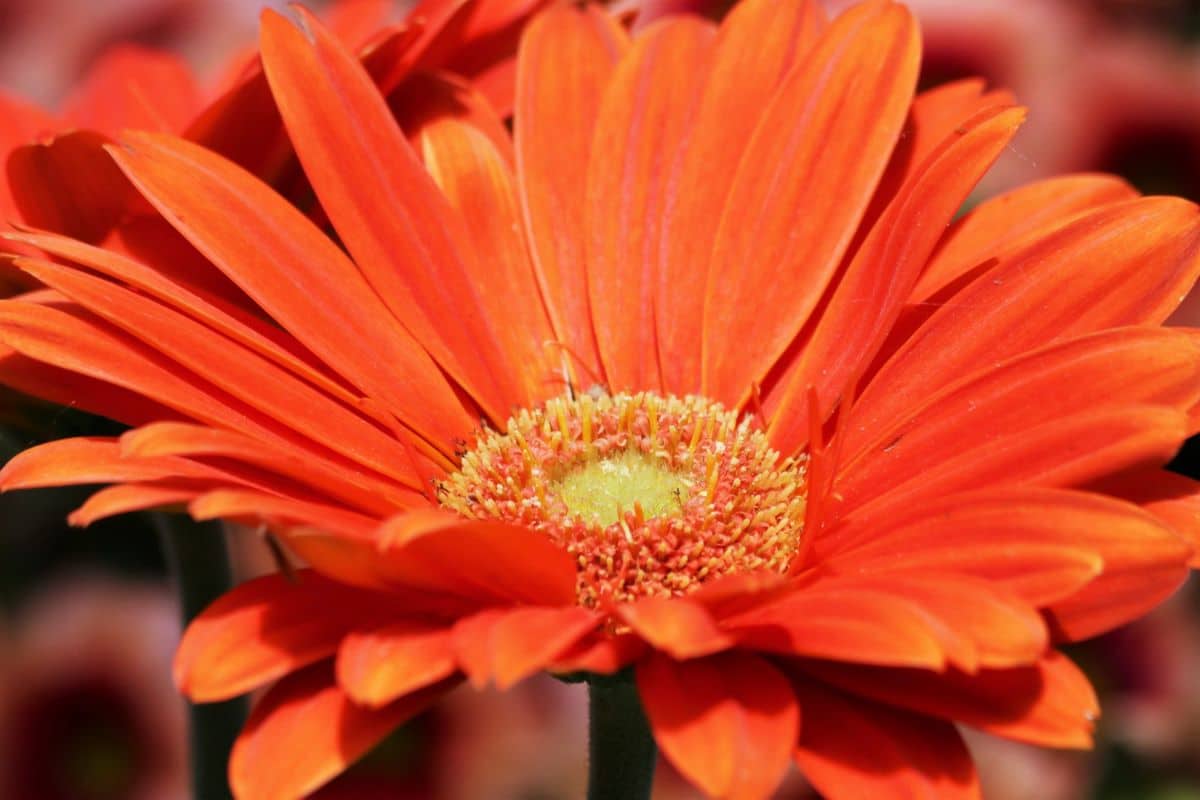
La gerbera, also called African daisy, is a small plant but with good-sized flowers, widely cultivated in gardens, but also and especially in the home. It is often even used as a cut flower, since these remain intact for several days before wilting.
Its multiplication is not complicated; On the contrary, their seeds have a high germination rate, or in other words: as long as they are viable, it is possible that if you sow ten, for example, all or practically all will sprout. So that, let's see how this precious plant is cared for.
Origin and characteristics of the gerbera
First of all, it is important to say that when we talk about gerbera, we refer to a series of plants belonging to the genus Gerbera, of which some 38 different species have been described. The one that is most commercialized, however, is the Gerbera x hybrida, that is, it is not a pure species as such, but a cross of several.
Its origin will be found in Africa and tropical Asia. It is not very big, in fact it barely exceeds half a meter in height, but the color of its petals is so striking that it attracts pollinators with ease. In addition, it has large, green leaves, designed to capture as much sunlight as possible and, thus, be able to photosynthesize at a good rate and grow.
Although it is usually had as an annual or seasonal plant, the gerbera really is perennial, capable of living for several years. But in cultivation, either because frosts are registered in winter, or because the quality of the flowers is decreasing, it is usually replaced every 1-2 years.
How many kinds of gerberas are there?
There are about 38 different species. However, only one is popular. For this reason, we want to show you a few varieties of gerberas that we think are very interesting to know. Then you will be able to see them:
Gerbera x hybrida
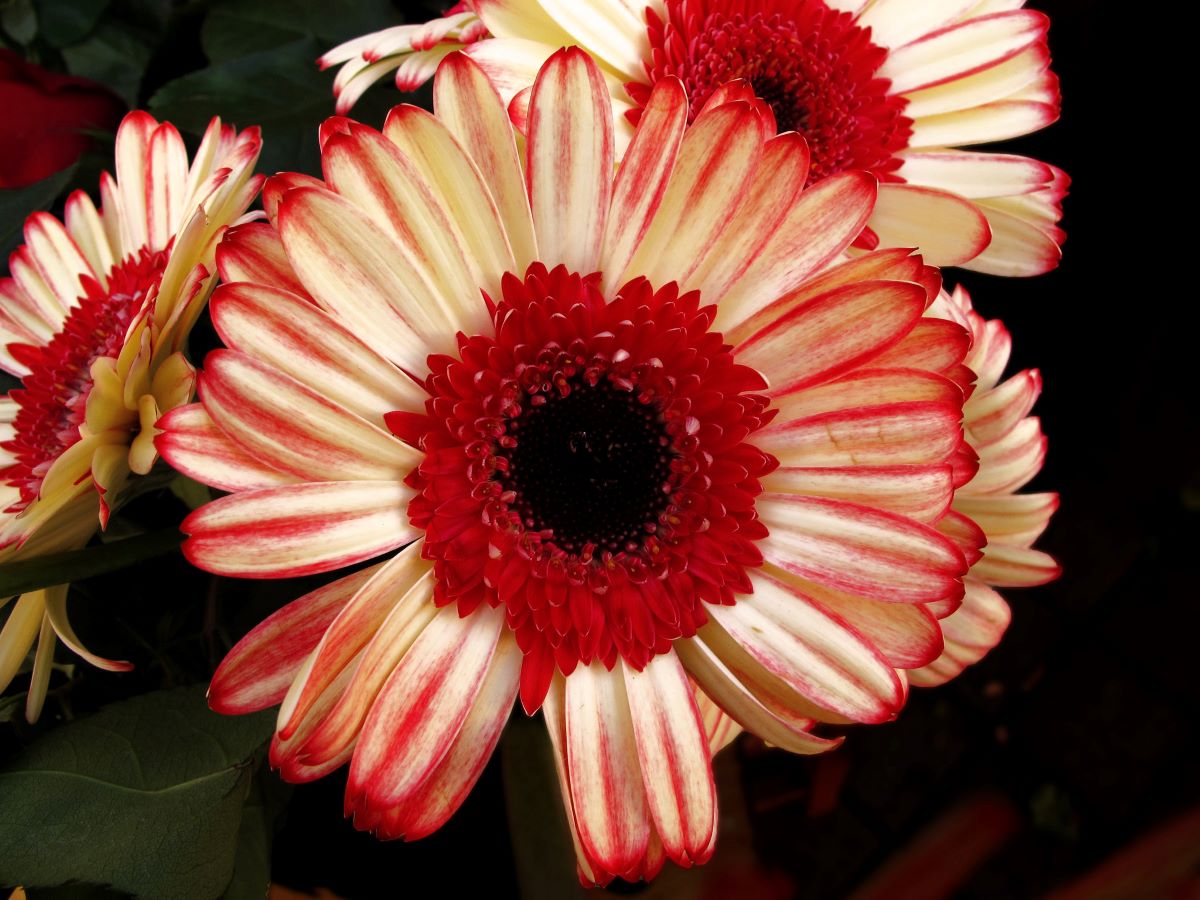
Image - Flickr / jacinta lluch valero
We start with the one that is marketed much, much more than the others. As we already anticipated, it is a cross between several species. It has a height of 50-55 centimeters, and presents flowers of very diverse colors: orange, red, pink, yellow, white.
gerbera aurantiaca
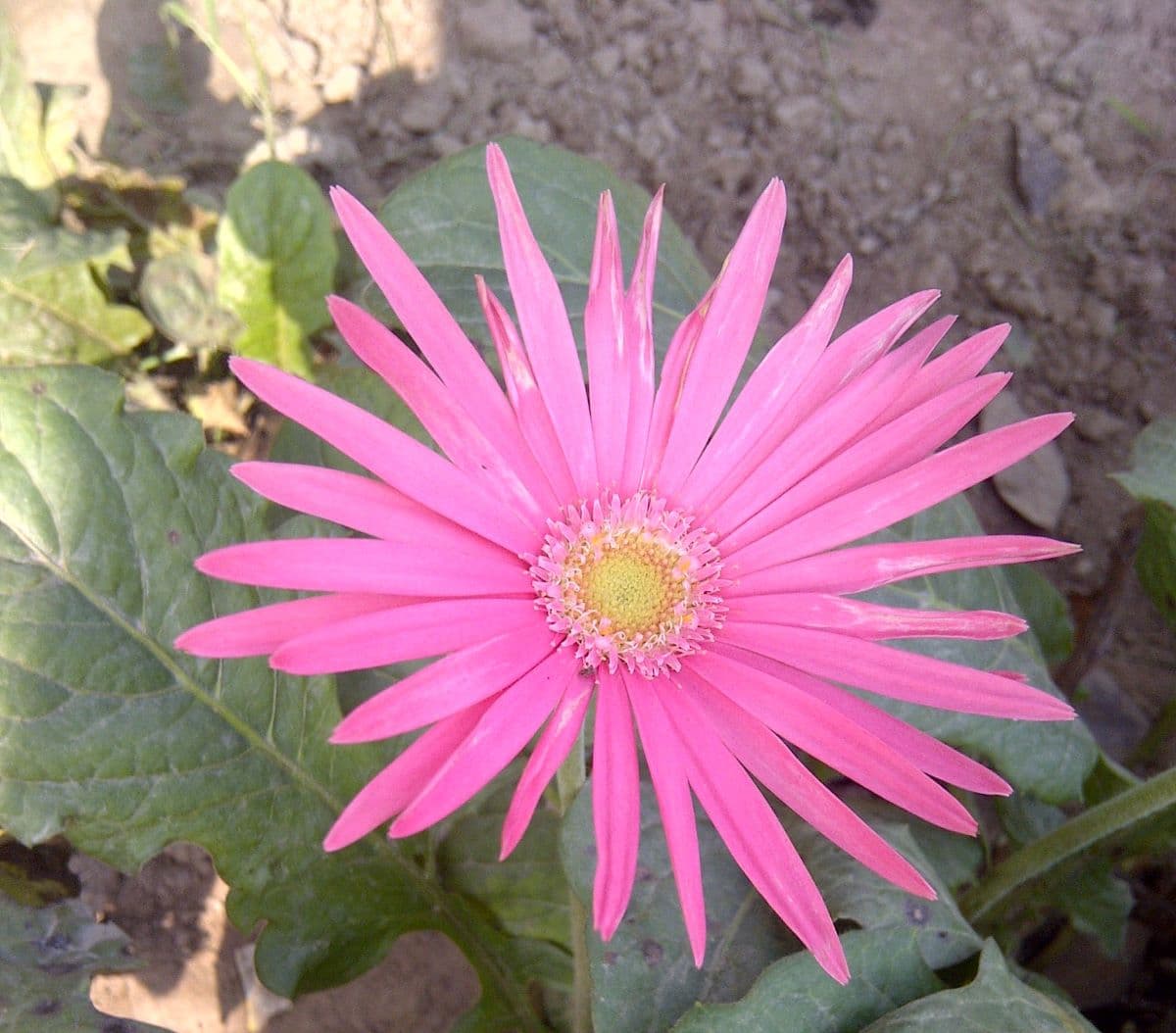
Image - Wikimedia / Aftabbanoori
La gerbera aurantiaca It is a species native to Africa, specifically from the KwaZulu-Natal region. It grows up to 40 centimeters, and the color of its flowers is almost always red, although it can range from yellow to scarlet. It is in danger of extinction.
gerbera jamesonii
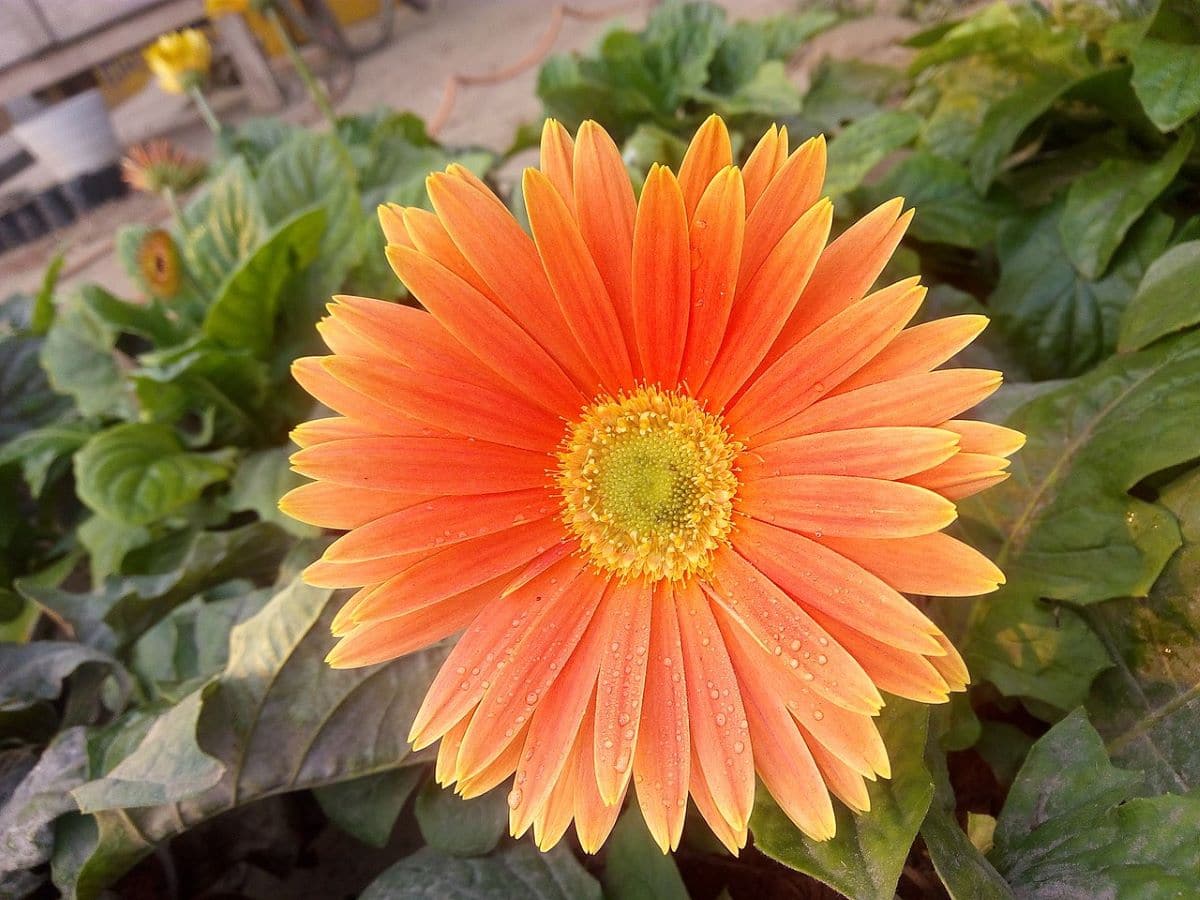
Image - Wikimedia / Adeep309
La gerbera jamesonii It is a well-known variety native to South Africa. Reaches a height of about 40 centimeters. Its flowers are red or orange.
Gerbera viridifolia
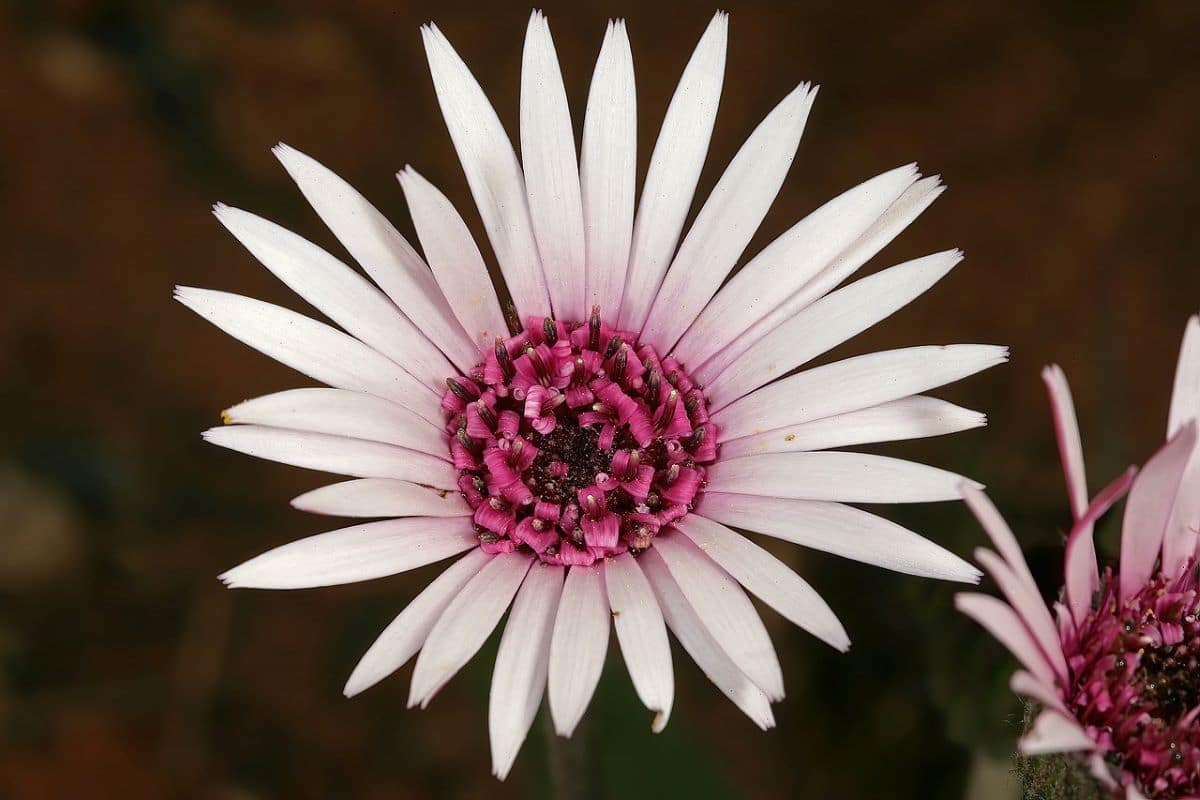
Image - Wikimedia / SAplants
La Gerbera viridifolia It is found towards East Africa, in the mountainous regions, and reaches 45 centimeters in height. It produces white or lilac flowers.
Gerbera care
The gerbera or African daisy plant is an herb that it can last us a few years. For this reason, it is worth providing special care thanks to which we will have our copy for more than one season. With these cares it is necessary to pretend that the plant is, first of all, healthy.
Its flowers are precious, and it will undoubtedly produce them if it is in good health; but Our objective should not be so much to get many flowers, but rather to prevent it from having pests, diseases and deficiencies; and if it does, that these cause the least possible damage so that it reaches winter strong.
Therefore, and having said that, we recommend taking care of the gerbera in the following way:
Location
Where to put it? The ideal is in an area where there is a lot of clarity, that is to say a lot of light. You can give direct sunlight early in the morning, but it is preferable not to.
In winter, and if there is frost, it will be kept in a bright room as well, but away from drafts.
Earth
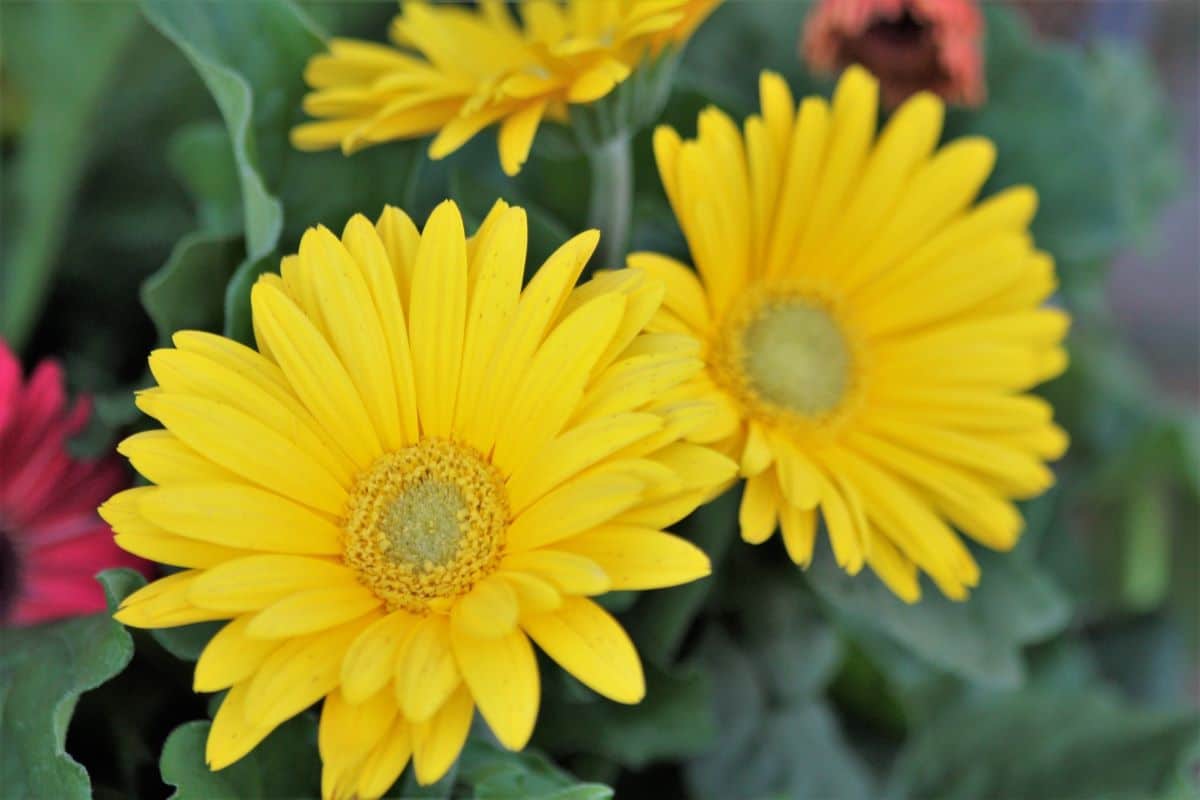
- Flower pot: it has to be cultivated with sandy substrates, and rich in organic matter. For example, a good mix would be peat with 30% perlite, or a good quality universal substrate that drains water well, such as that of the Flower brands (for sale here) or Fertiberia for example.
- Garden: if you want to plant it in the ground, you have to see if the ground is capable of draining the water quickly. To do this, we will make a hole about 40 centimeters high and wide, and we will fill it with water. If we see that as soon as we throw it in, the earth absorbs it easily, then we can plant the gerbera; In case we see that it costs you and that therefore it takes a long time, as soon as the water has been completely absorbed, we will make the hole twice as large, and we will fill it with a first layer of volcanic clay (for sale here) or arlita (for sale here), and then with a mixture of peat with perlite in equal parts.
Irrigation and fertilizer
Although they are two different things, from time to time I like to put it in the same section, because plants are beings that need water, but also nutrients. Focusing on the gerberas, they have to be watered an average of three times a week during the summer, and an average of 1-2 times a week the rest of the year.
You have to try not to overwater, as they fear excess water. In fact, for this reason it is not good to water from above, if not directing the water to the ground. This is especially important in summer, and more so if we have it in the sun, since if we wet its leaves, the sun's rays would cause burns.
The subscriber will be made in spring and in summer especially, but it is also due in autumn and, although less, also in winter. The products to use will be:
- Spring-summer: fast-effective liquid fertilizers, such as guano (on sale here) or seaweed extract (for sale here). Do not abuse the latter, as it is usually very alkaline. The best thing is to alternate: one month one, another month the other. Of course, you have to follow the instructions for use.
- Autumn-winter: in these two seasons the gerbera hardly grows, but since we are interested in keeping it strong, we will continue to fertilize it with a small spoonful (of those of coffee) with universal fertilizer such as this weekly. This product will keep the roots somewhat more protected from the cold.
Transplant
Both the planting in the ground and the change of pot will be done in spring, as long as the temperatures remain above 18ºC. This way, we will make sure that the gerbera will not suffer. In fact, although it is blooming, which always happens when they start to sell them in the nurseries, we will only have to be a little more careful and not manipulate their roots. But nothing else.
Let us remember that the soil must have a correct drainage, and that the pot must have holes in the base through which the water can escape without difficulty. It is not good to put a plate under it, unless it runs off after each watering.
How do gerberas spread?
The gerbera multiplies by seeds and by division of the rhizome in spring. Let's see how:
- Seeds: as soon as they are acquired, they must be planted in pots with soil for seedlings and covered with a little of this substrate. Later, we water and put them in semi-shade. It is important to add that it is a complicated method, because gerbera seeds remain viable for a very short time.
- Rhizome division: it is the most recommended method. In plants that are more than one year old, the roots can be pruned, leaving them with a length of about ten centimeters, and some leaves. These have to be cut a little less than half. Then, we proceed to divide these roots that will have some leaves, and they are disinfected with fungicide and immediately afterwards planted in pots with previously moistened vermiculite and covered with plastic.

Pests
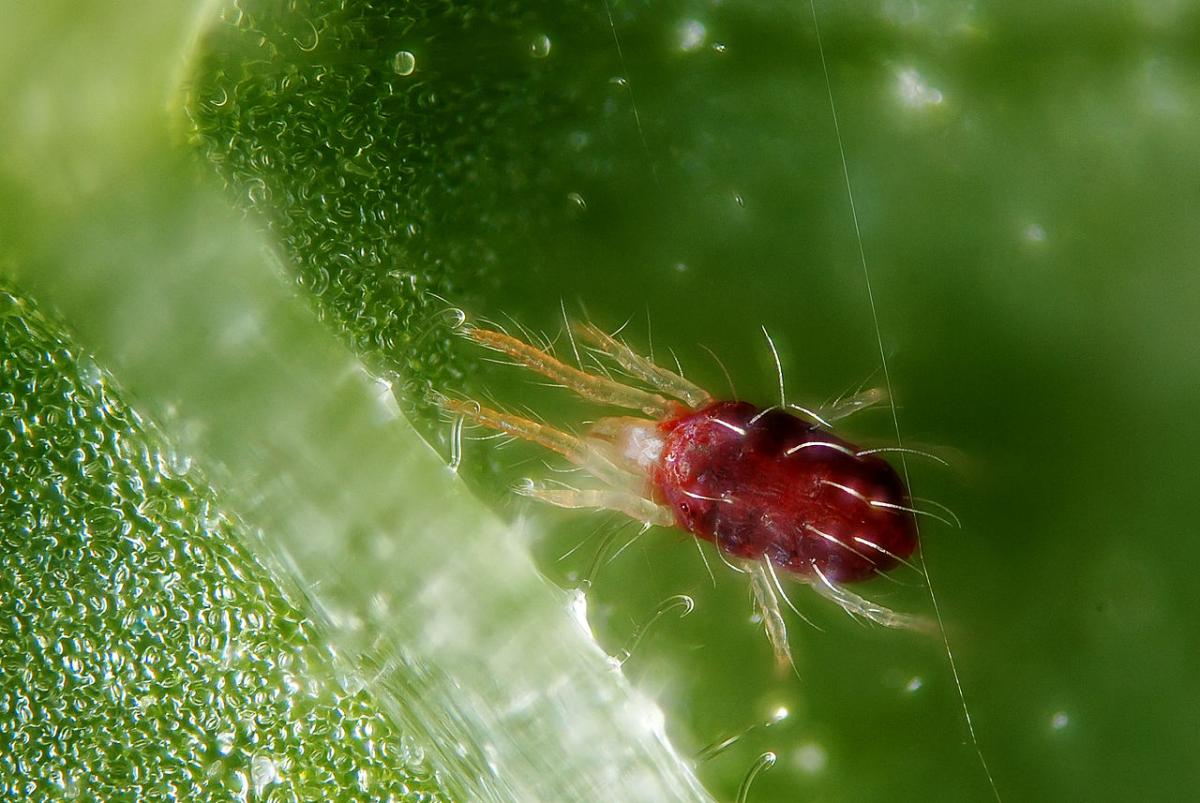
Image - Wikimedia / Gilles San Martin
The most common pests that most plants have, also affect the gerbera:
- Mites, among which is the Red spider: they are very small parasites, which feed on the sap. Some weave cobwebs between the leaves, where we will also see discolored dots. It is treated with acaricides (for sale here).
- Slugs: they are a pest as such, but when feeding on grass you have to watch them, and take measures, either with repellants or molluscicides (if you have pets, we recommend this that will prevent them from ingesting it).
- Sea Conches: ditto.
- Mealybugs: The mealybugs they are mainly seen on the underside of the leaves and on the stems. They are sap suckers, and also secrete a molasses that enchants the bold or sooty mold. This fungus covers the leaves with a kind of blackish coating or powder. Once the pest has been treated with anti-mealybugs (for sale here) or soap and water, it disappears.
- Trips: The trips they are similar to earwigs, but much smaller. It is found in the upper part of the leaves, where they also feed on its sap. Likewise, it is possible to see with the naked eye their feces, which are like black dots, and the spots that cause their bites. They are removed with soap and water.
- White fly: the White fly it is a sap-sucking parasite that lives among the leaves of the plant. Fortunately, today there are many products that eliminate it, such as diatomaceous earth (for sale here) or potassium soap (for sale here).
- Caterpillars: they are lepidopteran larvae that can cause significant damage to the leaves, which is where they feed. They are eliminated with an effective insecticide against caterpillars.
Management
The diseases you may have are the following:
- Botrytis: the botrytis It is a fungus that covers leaves, stems and flowers in a kind of grayish powder, which is why it is known as gray rot. The affected parts must be cut and treated with a fungicide containing copper.
- Powdery mildew: it is a fungus similar to the previous one, but this only affects the leaves. It is treated in the same way, or with sulfur-bearing fungicides, such as this.
- Rhizoctonia solani: it is a fungus that rots the roots. Moisture loving, appears when overwatered. For this reason, it is necessary to try not to water more than necessary; and if we suspect that you have fungus, quickly treat with fungicides (for sale here).
- sclerotinia: known as white mold, it is a fungus that covers the leaves and stems in a white, cottony-looking powder. That is the first symptom, because after what it will do is kill the plant. Therefore, to avoid it, the affected parts must be cut and treated with a fungicide.
- Virus: both the tomato tan disease virus and the rattle or leaf wrinkle virus. They cause the appearance of mosaics on the leaves. There is no treatment, just cut the affected parts and keep the plant well watered and fertilized.
Gerbera problems
In addition to pests and diseases, you can have other problems as well:
- Does not bloom: If it is spring and it does not flower, it may be because the temperatures are still low, or that it needs fertilizer. Check if the temperature is touching or reaching 20ºC, and if so, start fertilizing it with guano, or if you prefer with a fertilizer for flowering plants (for sale here). Thus, you will help her to draw flowers.
- Fallen flowers: If the gerbera has fallen flowers, it is probably because the sun has hit it. These plants are very fond of light, but not direct sun. You can give them a little bit if it's smooth, but it's not ideal. In addition, you never have to water from above, just moistening the soil.
- Wilted gerbera: If the plant withers quickly, we have to see if it has too much water. The plant is afraid of waterlogging, hence it is necessary to let the soil dry out a bit between waterings, otherwise the fungi will damage it. See more in Diseases.
Rusticity
The gerbera can not stand the cold. But if it is kept in a sheltered garden, for example in a corner and surrounded by plants, it can withstand temperatures of 0 degrees, and even some occasional frost of up to -2ºC.

What is the meaning of the gerbera flower?
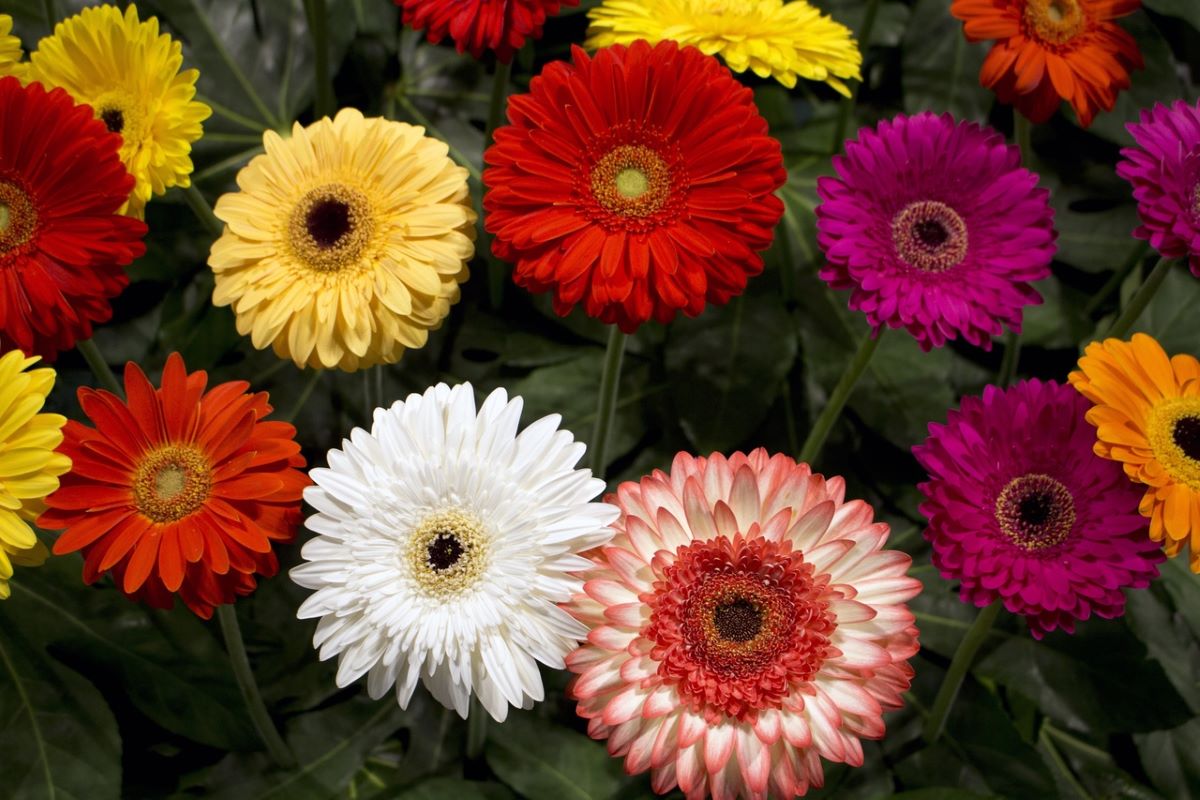
Depending on the color of the flower, one meaning or another is attributed to it. For example:
- Yellow gerbera: yellow is closely related to the Sun, and therefore to life. Also to success and wealth, so it is interesting to give it to a woman who has just given birth, for example, to wish the best for her and her baby.
- White gerbera: white is the color of purity and calm. A white gerbera flower is a wonderful detail for the most special loved ones, or for those who transmit peace, or need it.
- Red gerbera: symbolizes love, both the family one and, above all, that of a couple. Therefore, it is worth having a plant in the living room that you share with your loved one.
- Orange gerbera: represents joy, success and stability. It is a good flower to have in the center of a table during a meeting for example.
Where to buy?
If you want a pack of six different, click here:





